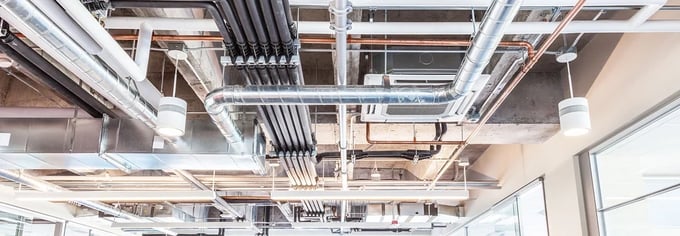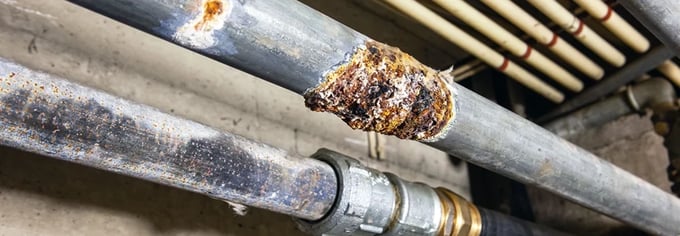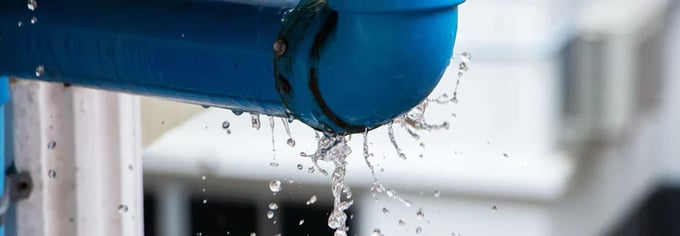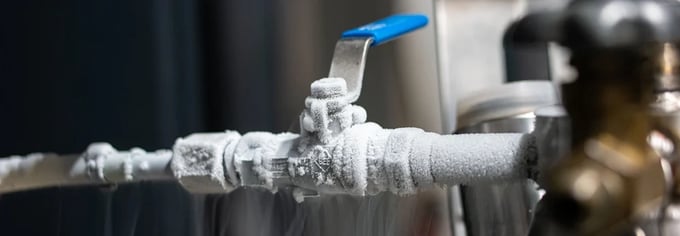Could anything be more stressful than knowing a pipe in your commercial building is leaking water but can't find exactly where?
Even if you're not a plumber or facilities manager, it pays to know where and how your facility's plumbing is likely to fail. Knowing where to start looking for leaks not only means you can protect your building, you can save an enormous amount of money that would go to repairs and inflated water bills.
We've compiled a list of seven of the most common ways your water pipes can bend, break, or burst and the basics of what you need to know about each one.
1. Ground movement
The earth is moving around your building all the time. Given enough time, seismic tremors, flooding, and erosion affects all buildings and their pipes. Even a tiny shift can permanently weaken a pipe or connector. Unfortunately, this damage often builds up slowly, so the only early sign you might find is a change in water pressure.

2. Temperature changes
Any extreme temperature changes, but most commonly freezing, will damage pipes since water expands when it freezes and is heated up.
How water leaks out depends a bit on what the pipe is made of: metal pipes will bend and warp, often creating leaks at joints or connectors, although these may not initially be major. On the other hand, plastic, ceramic, and concrete pipes will split and burst at the pressure point and be sudden and dramatic.
3. Broken seals and gaskets
Whenever you need to connect a water pipe with any appliance or fixture, a seal or gasket is required to prevent leaks at the connection point.
There are many different kinds, but the most common types are made of rubber. A rubber seal or gasket is much less long-lived than a pipe - most only last 3-10 years. These leaks usually start very slowly, making them difficult to notice before they've caused damage and wasted a lot of water.
4. Corrosion
Corrosion depends on the pipes used – a factor significantly determined by how old your building is and where in the world you are.
Cast iron and galvanized steel are commonly seen in older buildings in North America and Europe. While they are incredibly long-lasting, they will eventually succumb to rust. Other types of metal pipe, namely copper, brass, and stainless steel, are much more resistant to corrosion but are more expensive and will, over anywhere from 50 to 100 years, eventually corrode.

5. High water pressure
While having high water pressure is a nice comfort, particularly in residential buildings, it does come with the cost that it literally puts your pipes under pressure. This is one issue where it's best to consult a professional and ensure your fixtures and fittings are suitable for your building's water pressure.
6. Drain leaks
The first section of pipe out of any fixture or appliance, be it a sink, toilet, or shower, will always be more susceptible to leaks than just about anywhere in your building's plumbing. Unfortunately, you usually will only notice when damage is done, the area around the drain is discoloring, or water is leaking through the ceiling of the floor below.

7. Age
Nothing lasts forever, even water pipes. While almost all kinds of modern water pipes are made to last for decades, they all degrade and eventually start leaking.

As we mentioned above, metal pipes made of iron, steel, copper, or brass can last a very long time, anywhere from 50-100 years.
Plastic pipes, which are very likely used in most commercial properties, can also last a long time. Some polyvinyl-chloride (PVC) piping is rated for 100 years, although it hasn't been around long enough to prove it. Acrylonitrile-butadiene-styrene (ABS) is popular for drainage pipes (it contains carcinogens, making it unfit for drinking water) and is rated for 50-80 years. Cross-linked polyethylene (PEX), which is popularly used for water supply plumbing, is only expected to last about 40 years.
Find leaks before they become a problem with Severn WLD
While it's always best to know where to look if you think your building is suffering water damage, what's better is finding leaks before they cost you a single penny.
LAIIER's Severn WLD sensors are made to detect and alert you to leaks as early as possible. We've made them with special adhesives that fit around your pipes, drains, and fittings like tape. When paired with our monitoring software, these sensors can alert you if there are as little as two drops of water present. You can learn more here about Severn Sensors and whether they might be a good choice for your building.